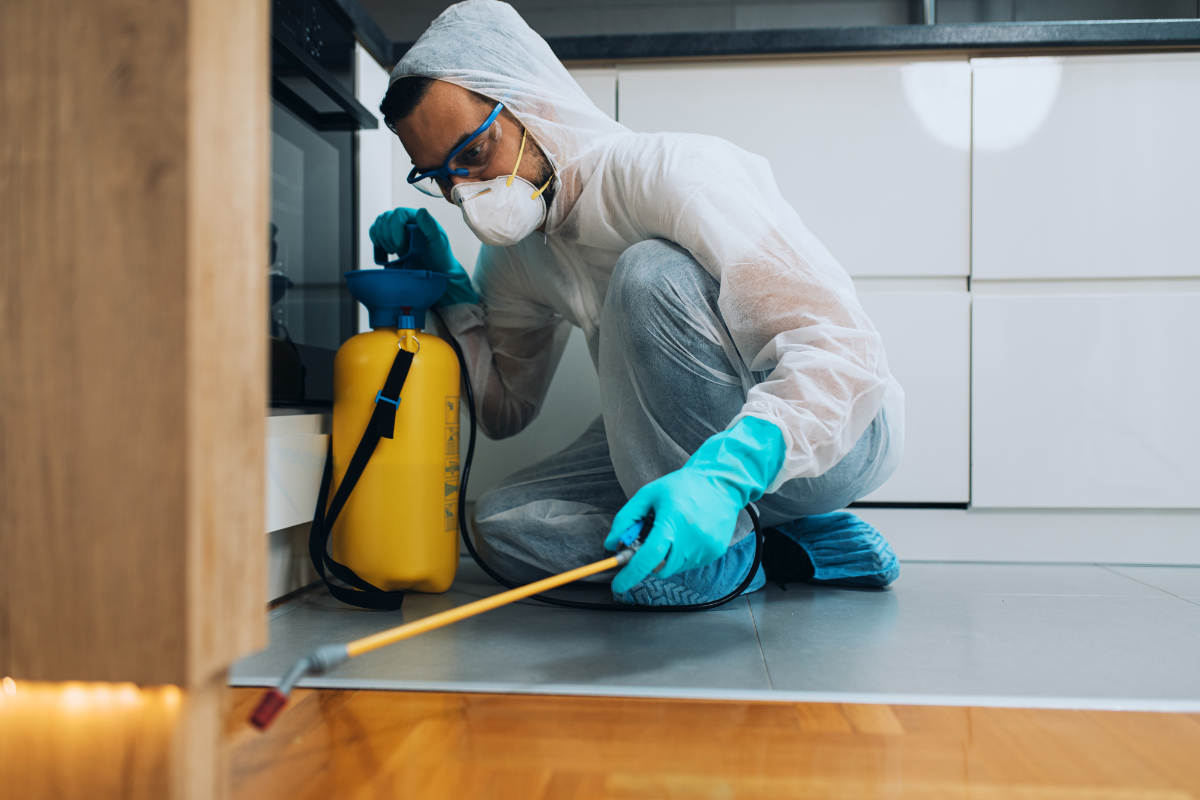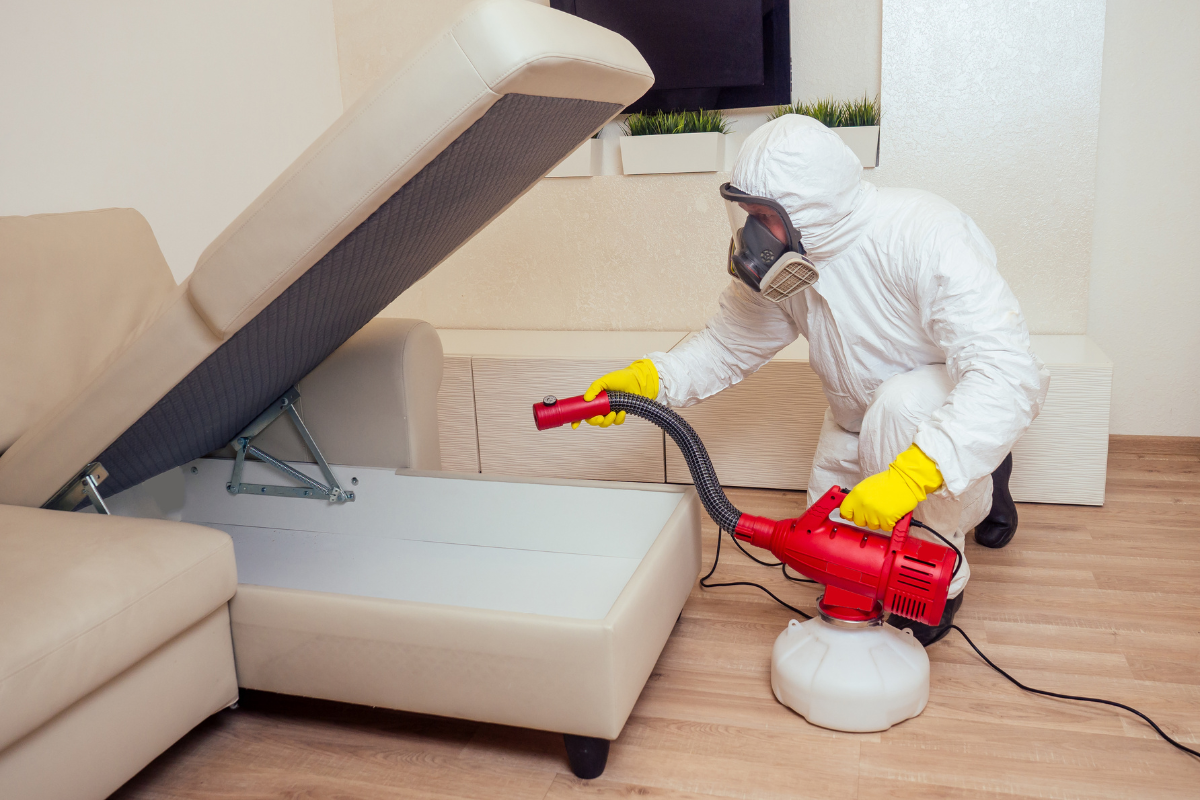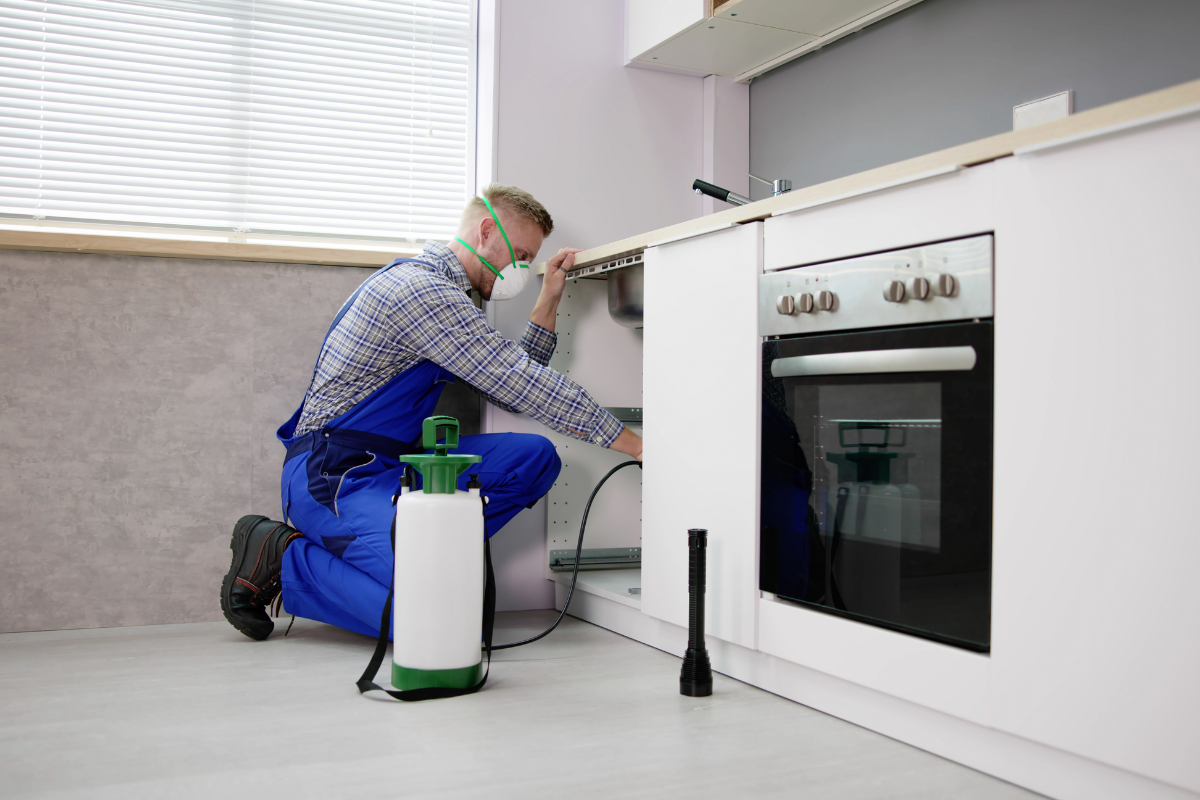


If you’ve ever switched on a bedside lamp and watched a bed bug vanish into a seam, you know the mix of disgust and urgency that follows. Bed bugs aren’t a sign of poor hygiene. They’re hitchhikers that thrive wherever people sleep. They spread through apartments, hotels, dorms, and single-family homes with equal enthusiasm. Once established, they do not give up easily. The good news is that a careful plan, grounded in accurate identification and disciplined follow-through, can clear an infestation. Mattress encasements and traps play a real part, but they are supporting actors. The star is process.
How bed bugs live, and why that matters
Bed bugs are vampires on a schedule. They feed at night, hide during the day, and breed continuously when the temperature and host access are right. Adult females can lay hundreds of eggs in their lifetime. Eggs hatch in about a week at room temperature, and nymphs need a blood meal between each of five molts. Starved bugs can survive for months, sometimes longer in cool environments. That biology explains why a single missed harbor, a suitcase, or a cluttered bed frame can re-seed a room.
They prefer to nest within a few feet of where you sleep. In practice, that means seams of mattresses, crevices in box springs and headboards, folds of upholstered furniture, and cracks behind baseboards or electrical plates. I’ve found clusters the size of a dime under a stapled fabric edge beneath a box spring and lone scouts tucked into the screw cavity of a bed frame. The pattern is consistent: close to the host, protected from disturbance, with rough surfaces to grip.
Understanding these preferences keeps your work focused. You don’t need to fog an entire house or strip every closet. You do need to dismantle the bed, spotlight the couch, and trace the wall near the sleepers.
Mattress encasements: what they do and what they don’t
Encasing a mattress and box spring is one of the more cost-effective moves you can make. A proper encasement is a zippered, bite-proof, tear-resistant cover that seals the mattress and box spring entirely. It does two things very well. First, it traps any bugs and eggs already inside. Trapped bugs eventually die since they can’t reach you, although that can take months. Second, it creates a smooth surface that makes inspections simpler. No more deep seams or rough quilting where nymphs can vanish. You unzip and scan a white, cleanable surface.
The encasement’s zipper is the failure point if you buy too cheaply. Look for locking zippers, tight tooth spacing, and a zipper garage that prevents gaps. I have seen bugs slip through a quarter-inch hole where a bad zipper met a stretched seam. On a queen set, expect to spend a bit more for a brand rated for bed bug protection. It is money well spent.
Should you encase the mattress, the box spring, or both? Both. The box spring often hides more activity than the mattress, thanks to its internal wood slats and stapled dust cover. If budget forces a choice, prioritize the box spring. And once encased, don’t remove the covers for at least a year. You’re not only starving any trapped bugs, you’re protecting the mattress from re-infestation and simplifying your checks.
Traps and interceptors: how they fit into a plan
Traps don’t eliminate an infestation on their own, but they are valuable for detection and suppression. Interceptor cups that sit under bed and couch legs are the workhorses. Bugs that try to climb up or down fall into a slick moat that they can’t escape. When I want to confirm activity in a bedroom with light staining and a few questionable bites, I install interceptors under each bed leg and check them after a week. They often catch the proof.
Placement matters. If the bed is touching a wall or draped with a comforter that touches the floor, you’ve built a bridge over your interceptors. Pull the bed a few inches from walls and food sources, tuck in sheets and blankets, and keep storage bins off the floor around the bed. Interceptors also collect data. A rising catch count over two weeks means fresh bug traffic. Zero captures with no bites and no new stains, after cleaning and encasing, suggests you’re winning.
Glue traps designed for roaches or mice have limited value for bed bugs. They may catch a wanderer, but they don’t intercept reliably. Active monitors that emit CO2 or heat can help in low-level infestations when used by a pest control company, yet they require set-up and interpretation. The simple plastic interceptor cup is still the best bang for the buck in most homes.
Cleaning and preparation without wrecking your nerves
The word preparation scares people because they imagine bagging their entire life. Smart prep is targeted. Focus on sleeping areas and upholstered furniture. Reduce clutter immediately around beds and sofas. Zippered bags or dissolvable laundry bags make transport easier, but large contractor bags work fine when sealed tightly.
Heat in the dryer is your friend. Thirty minutes on hot after the load reaches temperature is a reliable kill for all life stages on washable fabrics. I advise clients to launder sheets, pillowcases, duvet covers, and pajamas first. Then tackle blankets, bed skirts, and clothing stored close to the bed. Clean items go into clean bags or bins with lids. Do not return anything to the bed area until you’ve treated and encased.
Vacuuming is not a cure, but it reduces populations and removes eggs and fecal spots. Use a crevice tool on seams, tufts, bed frame joints, and along baseboards. Immediately after, remove the vacuum bag or canister contents into a sealed bag and take it outside. Steam, if you have a quality unit that produces dry vapor at 200 to 220 F at the tip, can kill on contact. Move slowly, about one inch per second, with a triangular head and fabric cover to https://fernandokqti942.yousher.com/pest-control-company-pricing-what-s-included-and-what-s-not avoid blowing bugs away. Steam excels on mattress edges, box spring seams, and couch folds. It is also easy to overdo, leaving moisture that can damage furniture, so work with a light touch.
Chemical and non-chemical strategies, and when to call in reinforcements
Most homeowners try to solve bed bugs with sprays alone, then call a pest control service after weeks of frustration. Sprays have a role, but they are a precision tool, not a fog. Over-the-counter foggers do almost nothing for bed bugs and can disperse them deeper into walls. If you choose DIY products, stick to labeled residuals and dusts that target cracks, crevices, and voids, and avoid broadcast spraying of mattresses where you rest your face.
Professional-grade residuals applied to the bed frame, baseboards, and furniture seams can create barriers that pick off bugs as they travel. Desiccant dusts like silica or diatomaceous earth in very thin layers inside voids and wall cracks can work slowly but surely, abrading the bug’s protective layer. Too much dust backfires, forming piles that bugs avoid and creating mess and respiratory concerns. This is where an experienced pest control contractor earns their fee: the right product, the right amount, placed exactly where bugs travel.
Heat treatment through a licensed exterminator service is the fastest route to clearing heavy infestations when budget allows. Portable heaters raise rooms to lethal temperatures, generally 120 to 140 F, and hold for several hours. Success depends on even heat penetration, air movement, and monitoring. I’ve seen homes clear in a day with a disciplined operator, and I’ve seen failures where clutter trapped cool pockets. Tenants returning with untreated luggage also undo a perfect heat job in one weekend. Follow-through still matters.
Fumigation with whole-structure gases is rare for bed bugs in houses and more common for termites. If a pest control company suggests whole-house fumigation for a typical bed bug case, ask for a second opinion. It can work, but it is expensive and usually unnecessary. Save that budget for heat or a thorough multi-visit program that includes inspection, targeted applications, and verification.
The anatomy of a smart bedroom setup
The goal is to isolate the sleeper, deny easy harborages, and monitor traffic. Start by dismantling the bed frame. Tighten joints, replace stripped screws, and consider sealing hollow metal frames with removable caps. If the bed has a fabric-covered underside, remove and discard that fabric. After vacuuming and steaming, apply a light residual in cracks and screw holes where allowed by the label. Encase both mattress and box spring, then reassemble with interceptors under every leg.
Keep nightstands a few inches off the wall and away from the bed so you can vacuum and inspect the back edges and drawer guides. Store minimal items inside. Avoid bed skirts and long drapes that touch the floor. If you love your bed skirt, commit to laundering it on a schedule. The less fabric contact between bed and floor, the better your interceptors perform.
For upholstered chairs or couches in rooms where people nap or watch TV, treat them like beds. Flip cushions, vacuum seams, steam carefully, and consider encasing if an appropriate cover exists for the piece. If you cannot encase, schedule rechecks. Living room furniture is a frequent second harbor in homes with heavy evening use.
Reading the signs and avoiding false alarms
Bed bug fecal stains look like small ink dots that bleed slightly into fabric. On wooden frames and painted baseboards, they appear as dark, fixed specks that do not smear easily. Shed skins, translucent and papery, often collect near hides. Eggs are tiny, white, and sticky, usually laid in clusters on rough surfaces. Actual bugs range from poppy seed size for early nymphs to apple seed size for adults. Fresh bites sometimes come in lines or clusters, but skin reactions vary widely. Some people show no reaction at all.
Don’t chase every bite. Mosquitoes, fleas, carpet beetles, and dermatitis can confuse the picture. Traps and visual inspection trump guesswork. If you travel often or host guests, inspect after each trip. I keep a small LED flashlight and a credit card in my travel kit for quick seam checks. At home, I watch interceptors and the encasement zipper zone. If two weeks pass with no captures and no new stains after treatment, I extend checks to weekly, then monthly.
What a realistic timeline looks like
With a moderate infestation caught in a couple of rooms, a disciplined plan typically shows measurable improvement within two weeks. Interceptors start catching fewer bugs. Fresh staining slows. Bites, if you had them, taper. By four to six weeks, you should be seeing very sporadic activity. At eight to ten weeks, zero captures across two consecutive checks is common when the work has been thorough.
Heavier infestations, homes with dense clutter, complex bed frames, or multi-unit buildings will stretch those timelines. In apartments, cooperation across units is crucial. Bed bugs pass under shared walls and through utility chases. A reputable exterminator company will insist on inspecting adjacent units and communicating with property management. If you live in a building, report early and keep records. The best pest control service programs schedule at least two or three returns and build verification into the process, not just applications.
Common mistakes that keep bed bugs around
Over-prepping is almost as bad as under-prepping. When every item in a bedroom is bagged and stacked, you create new harborages and hide trails from both you and the technician. Bag only what needs laundering or removal. Keep pathways clear.
People also undermine interceptors by letting bedding hang, by placing storage boxes under the bed, or by pushing the bed back against a wall. I visit, find empty cups, then notice the blanket bridge. Fix the bridge and the cups start catching again.
Another pitfall is product overuse. Household insecticide sprays applied to mattresses and couches without reading the label can create health risks and train bugs to avoid treated surfaces. Likewise, piling diatomaceous earth like sand against baseboards clogs air and becomes a mess. Thin, targeted, and labeled beats heavy and hopeful.
Finally, people give up too early. Bed bugs sometimes starve for months. A stray survivor can rekindle activity if you remove encasements or relax inspections. The discipline to see the plan through, even when sightings drop, is what prevents comebacks.
How professionals blend tools for better results
When I train new technicians at a pest control company, I stress choreography. An effective visit has a rhythm: inspect, vacuum, steam, apply targeted residuals, install interceptors, encase, document, and schedule follow-up. Each step supports the others. Vacuuming reduces immediate pressure and clears debris so residuals contact surfaces. Steam knocks down live clusters in sensitive zones like mattress seams. Residuals and dusts create a long tail of control where bugs travel later. Interceptors and encasements turn a complex sleeping surface into something we can read and maintain.
We also talk openly about product resistance. Bed bugs have developed resistance to certain pyrethroids. Rotating chemistries, mixing modes of action, and relying on physical methods prevent overreliance on any single approach. Good exterminator service programs explain these choices to clients and set expectations. You should feel like a partner, not a bystander. If a technician can’t show you where the main harbors were or how interceptors are placed, push for clarity.
Travel, secondhand items, and reinfestation risk
Prevention beats any treatment. When traveling, inspect hotel bed corners before you unpack. A 60-second check often tells the story. Keep luggage on a rack, not on the bed or floor, and avoid draping clothes over upholstered chairs. At home, treat suitcases like potential carriers. After a trip, vacuum the luggage seams and, when feasible, heat-treat clothes in a dryer before putting them away.
Secondhand furniture introduces risk. Mattresses and sofas should be assumed suspect unless they come from trusted sources and have been inspected and, ideally, treated. I’ve seen beautiful mid-century frames arrive with a hidden population that bloomed within two weeks. If you love thrifting, plan for a quarantine space and a careful inspection protocol. A pest control contractor can also pre-treat items in a heated chamber where available.
Budgeting and choosing help
Costs vary by region, size of dwelling, and severity. DIY with encasements, interceptors, and selective products might run a few hundred dollars for a single bedroom. A professional program with two to three service visits often ranges from several hundred to over a thousand for a small home. Whole-home heat treatments can cost more, but they shorten the timeline and reduce chemical use. Ask for a clear scope: number of visits, methods used, prep expectations, and what counts as success. The best pest control service teams build in a re-inspection, not just a final spray.
Avoid quotes that promise a single-visit miracle with no follow-up. Bed bug extermination is a process, not a one-shot task. Check reviews, ask how they handle apartments versus single-family homes, and request a copy of product labels they plan to use. If a provider also offers termite control services, that’s a sign of a full-spectrum firm, but make sure the technician assigned has bed bug experience. The species is different, the strategy is different.
A focused, practical sequence you can follow
- Strip the bed, bag linens, and run them through a hot dryer cycle before washing. Store clean items in sealed bins. Dismantle the bed, vacuum seams and joints, and steam slowly along edges and tufts. Treat cracks with labeled residuals if using chemicals. Encase mattress and box spring, reassemble the bed, pull it a few inches from walls, tuck in bedding, and place interceptors under every leg. Declutter the immediate bed zone, inspect and treat nearby furniture, and keep fabrics from touching the floor. Check interceptors weekly, log captures, repeat steam or targeted treatment as needed, and keep encasements on for at least a year.
The peace of method
Clearing bed bugs is less about heroics than about doing the right things consistently. Encasements and traps will not solve the problem alone, yet they give you control points that are easy to check and hard for bugs to beat. Layer them with careful cleaning, selective treatments, and a sleeping setup that denies shortcuts, and the odds swing in your favor.
If you feel stuck or the infestation spans multiple rooms, involve a reputable exterminator company sooner rather than later. A seasoned technician saves time by knowing where bugs hide in your specific bed frame, how to read faint staining, and when a persistent catch in one cup indicates a wall void issue. They bring the choreography, you bring the access and follow-through. Together, you take back the bed.
When the night finally passes without a bite or a spot, it rarely feels like a grand victory. It feels like normal life restored. That’s the quiet success a good plan delivers.
Howie the Bugman Pest Control
Address: 3281 SW 3rd St, Deerfield Beach, FL 33442
Phone: (954) 427-1784